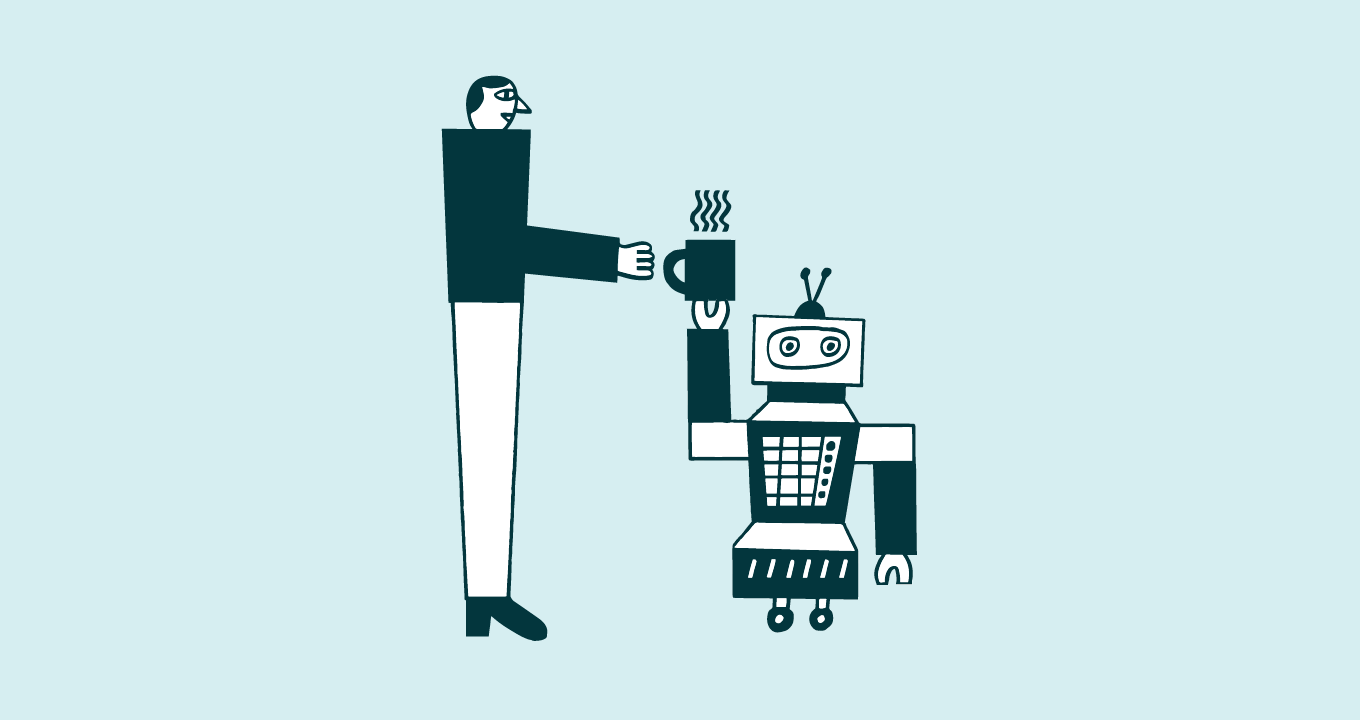Article • 4 min read
Understanding bot abilities—and limitations
Última atualização em December 14, 2017
If you were born after 1970, you’re probably too young to remember the Automat, the restaurant industry’s first foray into fast food. Walls of coin-operated, glass-fronted cubbies sold hot meals for a few nickels and a twist of the wrist. Awestruck diners marvelled at its speed and efficiency—they never had to speak to a waitress or wait for an order. What customers never saw, however, were Automat’s fully-manned kitchens and cashiers stuffing heavy bags with rolled coins.
These days, chatbots are the new Automats, automating customer service—this time through different glass-fronted devices. Whether it’s a simple scripted bot answering FAQs or an AI-backed bot programmed to make product recommendations, bots are manning customer service front lines more often .
But make no mistake, the humans writing scripts and engineering bot handovers still hold the keys to customer service. Why? The answer is three-fold:
The uncanny valley is still a world away
When “AI” was coined by a Dartmouth Math professor in the mid-1950s, the computer science community (and science fiction authors) had high hopes for its evolution. But while AI was initially projected to beat a human chess player in just a decade, true victory took forty years. The uncanny valley, or the theory that human replicas elicit feelings of eeriness and revulsion, is thankfully still a world away.
While chatbots can effectively process and respond to natural language using various kinds of AI, the data needed to train those bots to reply in a way that’s even vaguely human is still a few years out of reach for most. The titanic three—Google, Facebook and Apple—have access to most of that data, and their army of engineers still haven’t managed to completely close that gap.
With technology not quite there, marketers have to search for other ways to make bot interactions feel more human. One clear solution: Have real people ready to pick up conversations after the AI reaches its limit. In deploying rudimentary scripted bots and NLP-powered bots to handle first wave customer questions, marketers should have a full complement of customer service agents on hand to ease customers through any hurdles.
Bots can handle the dull, the dirty, and the data…but not decisions
Economist have pointed out that robots are best implemented in jobs that are dull, dirty, dangerous or, more recently, data-based. Marketers who are disappointed to find that they can’t cut out human agents should be reminded that dull and data-based tasks comprise only a fraction of a representative’s role. There’s much more to a customer’s journey with your company, and humans color that journey more fully than bots.
Indeed, chatbots sub in for human agents’ rote and data-driven tasks: tracking packages, answering FAQs, issuing tickets. But a prediction is not a decision. When requests get too complicated, bots need to be programmed with an “escape hatch,” a smooth hand off to a human agent, delivering all necessary context—conversational history, pages and products viewed, and more. Human agents, freed from answering the same questions ad infinitum, then spend their time doing what people do best, building trust and solving problems.
Bots aren’t programmed to love
Finally, there’s something bots simply can’t do: care. Even as AI makes strides toward reading human emotions through facial expression and verbal sentiment analysis, they’re not programmed to feel human emotion. Humans, on the other hand, have been there—the shoes don’t fit, the room is wrong, the package is late.
Empathy is a quintessentially human quality, something even the most talented engineer has been unable to program. As customer service organizations evolve, smart ones will select agents who over-index on empathy who, through that quality, are better able to build trust—another Achilles Heel for AI.
According to Kurt Grey, associate professor of psychology and neuroscience at the University of North Carolina, Chapel Hill, people don’t really trust AI because of its inability to feel human emotions. That vulnerability, paired with mutual concern, are two essential elements of trustworthiness unrepresented in AI. Humans, on the other hand, are filled with them.
Bots may be automating the front lines of customer service, but let’s not forget the cooks in the kitchen are still flesh and blood. Human beings are the heart and soul of customer service now, and for the long term.
